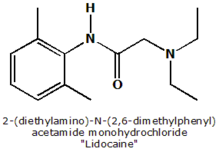Insertion of a nasogastric tube can be highly painful for the patient. Small studies have demonstrated that topical anesthesia, including the use of nebulized lidocaine, provides pain relief without significant drug absorption. The addition of nose breathing while the nebulized anesthetic is delivered through the mouth decreases lung deposition of the nebulized solution.
Cullen and associates compared the use of nebulized lidocaine with nose and mouth breathing or nebulized saline before nasogastric tube insertion to reduce procedure discomfort. Fifty adults treated in two emergency departments who required nasogastric tube insertion and did not have pre-existing impairment to gag reflex or a history of reactive airway disease were randomly pre-treated with nebulized lidocaine (400 mg, 4 mL of 10 percent solution)or normal saline (4 mL) in a double-blind manner.
The solution was administered using a face mask and a compressed gas-powered jet nebulizer with an oxygen f low rate of 6 L per minute. The nasogastric tube was inserted immediately after completion of the treatment, using lubricating jelly. Patient discomfort was measured with a visual analog scale. The insertion nurse indicated the difficulty of the insertion using a Likert scale. Complications were recorded.
The visual analog discomfort scale revealed significantly less pain in the lidocaine group than in the placebo group, with no difference in perceived insertion difficulty score noted by the nurses. Epistaxis occurred in five of the 29 patients who received lidocaine and in none of the 21 who received normal saline.
The authors conclude that the use of nebulized lidocaine effectively reduces discomfort associated with nasogastric tube placement (see accompanying table). An increased likelihood of epistaxis, probably caused by injury to insensate turbinate and nasal mucosa, is possible wit h topical anesthesia.
RICHARD SADOVSKY, M.D.
Cullen L, et al. Nebulized lidocaine decreases the discomfort of nasogastric tube insertion: a randomized, double-blind trial. Ann Emerg Med August 2004:44:131-7.
EDITOR 'S NOTE: In an editorial in the same journal, Gallagher 1 reviews the evidence supporting the use of topical anesthesia before nasogastric tube insertion, including (1) lidocaine nasal spray; (2) lidocaine intranasal jelly combined with a tetracaine-plus-benzocaine pharyngeal spray and a nasal vasoconstrictor; (3) nebulized lidocaine added to intransal lidocaine jelly with or without a nasal vaso-constrictor; and (4) the current report on the efficacy of nebulized lidocaine delivered to the nose and the pharynx. Data indicate that patients should no longer have to suffer nasogastric tube insertion without topical anesthesia. Single-use, disposable atomizers are probably the best way to reduce possible cross-contamination. Nebulizers may have a small advantage over atomized spray delivery systems. There has been no evidence of increased inadvertent tracheal intubation secondary to local anesthesia use.--R.S.
Evidence-Based Options for Topical Anesthesia Before Nasogastric Tube Insertion *
Preservative-free lidocaine,10%,4 mL, nebulized by face mask (400 mg of lidocaine total) ([dagger])
Preservative-free lidocaine spray, 4%, delivered by single-dose atomizer to the nose (1.5 mL) and pharynx (3 mL), followed by intranasal lidocaine jelly, 2%, 5 mL, sniffed and swallowed (280 mg of lidocaine total)
*--Two sprays of phenylephrine, 0.5%,in each nostril may decrease the incidence of nosebleeds.
([dagger])--Do not use in patients with asthma.
REFERENCE
(1.) Gallagher EJ. Nasogastric tubes: hard to swallow. Ann Emerg Med 2004:44:138-41.
COPYRIGHT 2005 American Academy of Family Physicians
COPYRIGHT 2005 Gale Group



